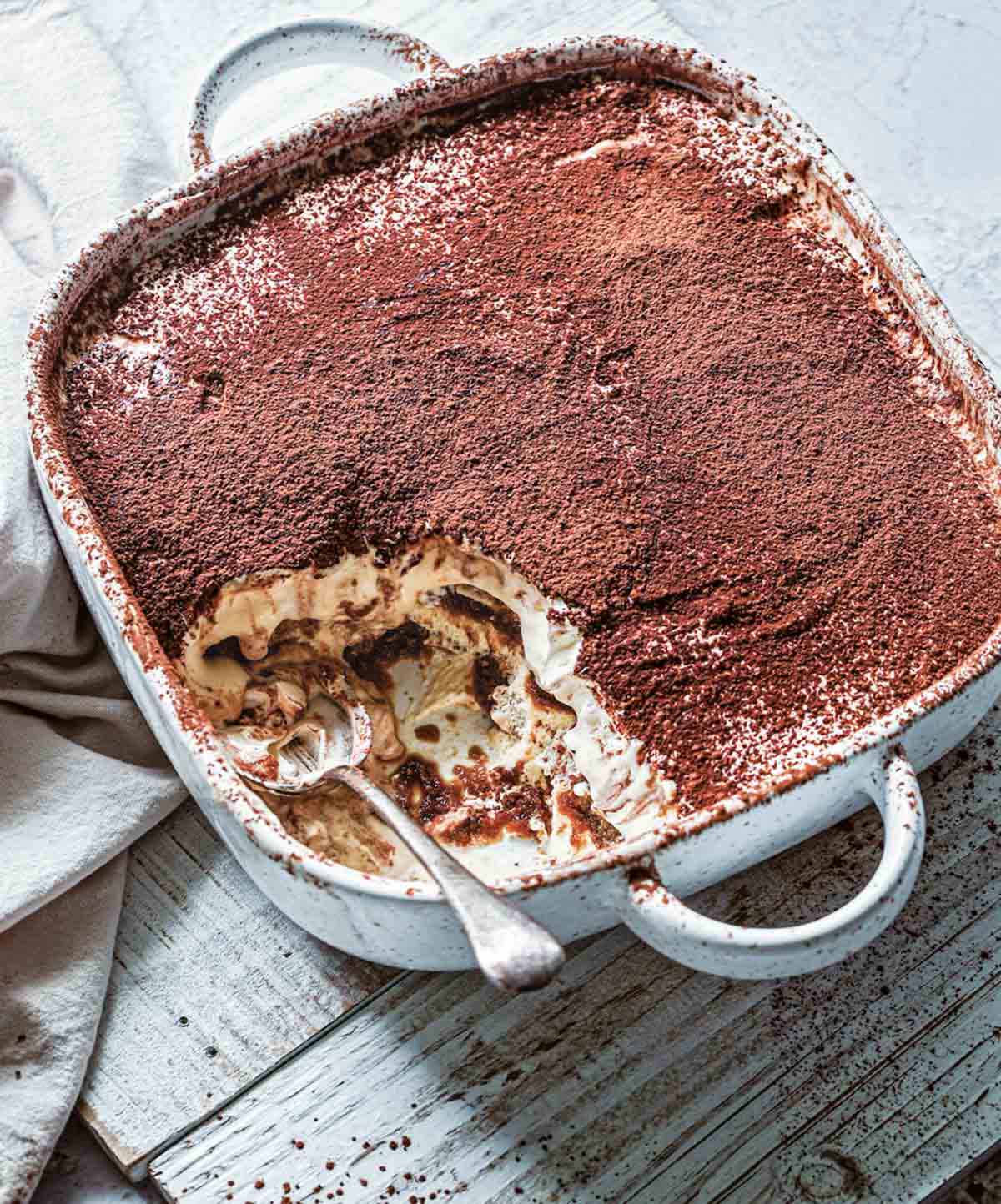
Classic Italian tiramisu is a rich Italian dessert made with light, creamy mascarpone cheese and layered Savoiardi ladyfingers soaked in coffee. It doesn’t get any sweeter than that! There are so many different takes on tiramisu, but the basic ingredients do not vary. It’s my favorite dessert!
When I went to parties as a little girl, there would always be a table with a complete spread of delicious desserts. There were two tiramisu dishes, one for the adults, which had the flavored liqueur, and the other for the kids, which was filled with chocolate. Chocolate milk was used instead of coffee, so we kids never missed out! If you don’t want to add a flavored liqueur, such as Frangelico or Marsala wine to the dish, you can leave it out.–Caroline de Luca
The history behind tiramisu
It is not known where tiramisu originated. Some suggest it was created in Treviso in the 1800s, and over the years it has been adapted to suit individual tastes all around Italy.
Want to Save This?
Original ingredients include the Italian Savoiardi ladyfinger, eggs, sugar, mascarpone cheese, coffee, cocoa powder, and a flavored liqueur of some kind. Over the years the recipe has been adapted with cream to replace the eggs, as some people are uncomfortable using raw eggs. If this is the case, use 1 1/4 cups (300 ml) of heavy cream instead of the eggs.
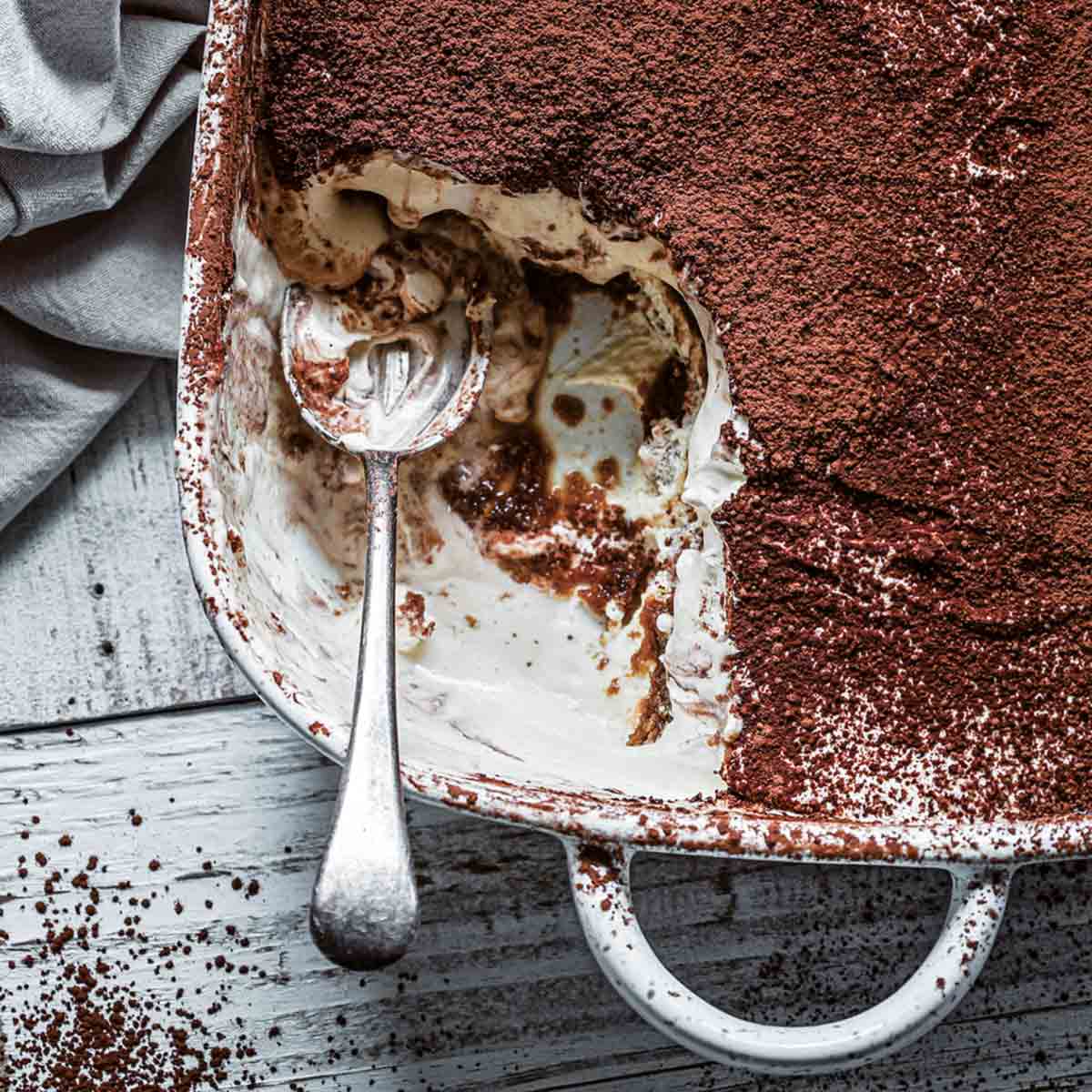
Tiramisu FAQs
If you’re making the dish ahead of time, it’s best to serve within a day or two. Any leftovers should be refrigerated immediately and will last 4 days from the day it was made. Be sure to wrap it well with plastic wrap or transfer it to an airtight container.
Yes! You’ll need to use plastic wrap and place it directly against the surface (without cocoa powder) to prevent an unappetizing skin from forming on your custard. Cover it tightly, and repeat with another layer of plastic. Cover everything once again with foil, and freeze.
When it’s time to thaw, let it sit at room temperature for about 20 minutes, then unwrap and add the decorative layer of cocoa powder.
If you take the right precautions, you’ll be just fine. In Europe, this recipe has been made for centuries without and with pasteurized eggs.
However, if you’re pregnant, immunocompromised, or just generally cautious, note that you have two options. First, use store-bought eggs. The USDA says, “All egg products are pasteurized as required by United States Department of Agriculture’s (USDA) Food Safety and Inspection Service (FSIS)… to destroy bacteria.” Second, if you’re still iffy about the eggs, Ms. de Luca advises using 1-1/4 cups of heavy cream in place of them.
If you over beat your mascarpone, it can curdle. To avoid this, be sure to use full-fat mascarpone cheese, start with cold ingredients, and use a large bowl for mixing.
If your mascarpone does curdle, gently heat the mixture over a double boiler while whisking, until the lumps disappear. Let the mixture cool to room temperature and mix to combine.
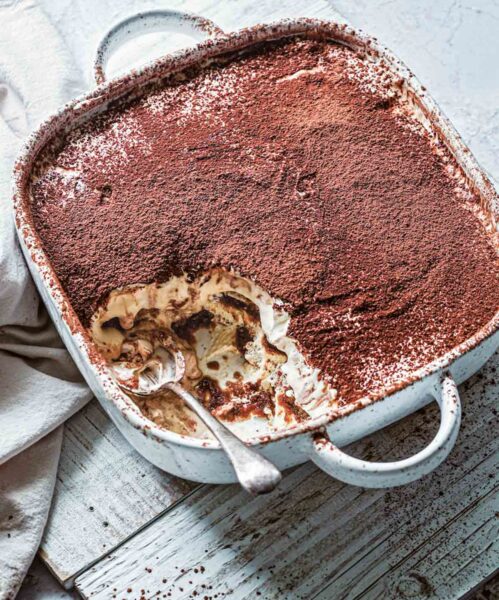
Traditional Italian Tiramisu
Ingredients
- 2 cups freshly brewed hot espresso or coffee
- 1 shot Frangelico liqueur, Marsala wine, Amaretto, brandy, dark rum, or any coffee-flavored liqueur (optional)
- 1 1/4 cups full-fat mascarpone cheese
- 1 teaspoon vanilla extract, vanilla bean paste, or 1 vanilla bean, halved and seeded
- 4 large eggs, separated, with yolks in one large bowl and whites in another, at room temperature
- 1/2 cup granulated sugar
- One (17.6-oz) package Savoiardi lady fingers
- Cocoa powder, for dusting
Instructions
- Pour the brewed espresso into a shallow bowl wide enough to accommodate the length of the Savoiardi ladyfingers. Add the flavored liqueur of your choice, if using, to the coffee and give it a little stir to combine.
- In a large mixing bowl, combine the mascarpone and vanilla and use a handheld mixer to beat gently until just combined. Take care not to overbeat the mixture as mascarpone can curdle easily.
- To the bowl of egg yolks, add the granulated sugar and, using the electric mixer, beat until the yolks become thick and pale yellow, about 5 minutes.
- Clean the whisk attachments and dry them thoroughly. Beat the egg whites until they form stiff peaks, 4 to 5 minutes. Gently fold the egg whites into the beaten egg yolk mixture a little at a time until just combined. You want to make sure that you keep the mixture light and fluffy.
- Gently fold in your mascarpone mixture into the beaten egg mixture, making sure it is well combined. (If you are substituting cream for the eggs in this recipe, beat 1 cup (240 ml) for 2 to 3 minutes, until stiff peaks form, then gently fold it into the mascarpone mix.)
- To assemble the tiramisu, spread a thin layer of mascarpone mixture on the bottom of a square 8- or 9-inch baking dish or individual serving dishes to help keep the ladyfingers in place.
- Take one Savoiardi lady finger at a time and quickly dip it into the coffee for just 1 or 2 seconds. You want to make sure that it is completely submerged in coffee, but take it out quickly, before it begins to fall apart. Create a layer of coffee-soaked ladyfingers, one at a time, on top of the mascarpone, until the base is completely covered. You may need to cut the ladyfingers in half if you are using individual glasses or jars.
- Carefully cover the ladyfingers with one-third of the mascarpone mixture and use an offset spatula to spread it out evenly. Repeat the process twice, layering the ladyfingers and finishing with the mascarpone mixture on top.
- Cover with plastic wrap and refrigerate for at least 2 hours or overnight. (I like to make mine the day before serving it, which allows all the flavors to develop.)
- Dust with cocoa powder just prior to serving.
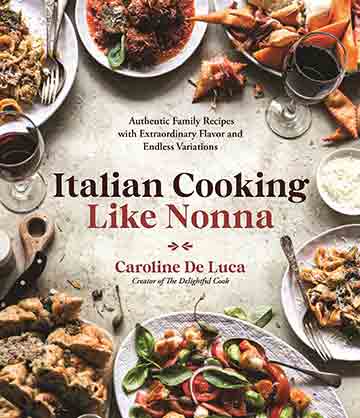
Explore More with AI
Nutrition
Nutrition information is automatically calculated, so should only be used as an approximation.
Recipe Testers’ Reviews
I have a habit of deflating pancake batter regularly when I add in the egg whites, and wasn’t hopeful that the custard in this tiramisu would work for me and my terrible folding skills. But! It came out totally great – the perfect mix of airy and creamy.
This Italian tiramisu was delicious and called to mind a traditional tiramisu we had in Venice. I had never contemplated making tiramisu because I had assumed that it was overly complicated. In that regard I stand corrected. Tiramisu is, in reality, a very simple dessert which can be assembled in a short period of time.
The tiramisu was lovely and light. All the flavors and textures blended well. As I mentioned, tiramisu is easy to make and something that even an inexperienced baker could whip up. It is a great option for those times you do not want to turn on the oven.
So this take on the classic tiramisu is billed as a decadent one – well let me be the first to say … it was delicious! Tiramisu, if it is on the menu, is a favourite dessert to order when going out for a dinner. This recipe is one of the best ever!
The recipe comes together very easily. I have always made tiramisu with cream that is whipped, however this version uses raw eggs. It makes for a truly decadent dessert.
I used eggs instead of cream for this traditional Italian tiramisu. I used Boudoir trifle sponge fingers, similar to Savoiardi and Amaretto liqueur.
I would have liked to assemble my dessert in a long flat rectangular tray but had to use a round bowl instead, making it harder to arrange the fingers in any consistent direction. I allowed my dessert to sit in the fridge overnight before serving it.
After the dessert had sat overnight I thought that the dessert had settled more than it would have if I had used cream instead of eggs. I thought the finished taste could have been stronger in coffee flavour and also that the biscuits might have benefited from longer soaking in coffee/liqueur mix.
So far my dessert has only been in the fridge overnight so it is still holding up well. If I was to make the dessert again I would use more coffee and liqueur to get a stronger coffee flavour and I would have let the sponge fingers soak for longer to make the dessert less dry.
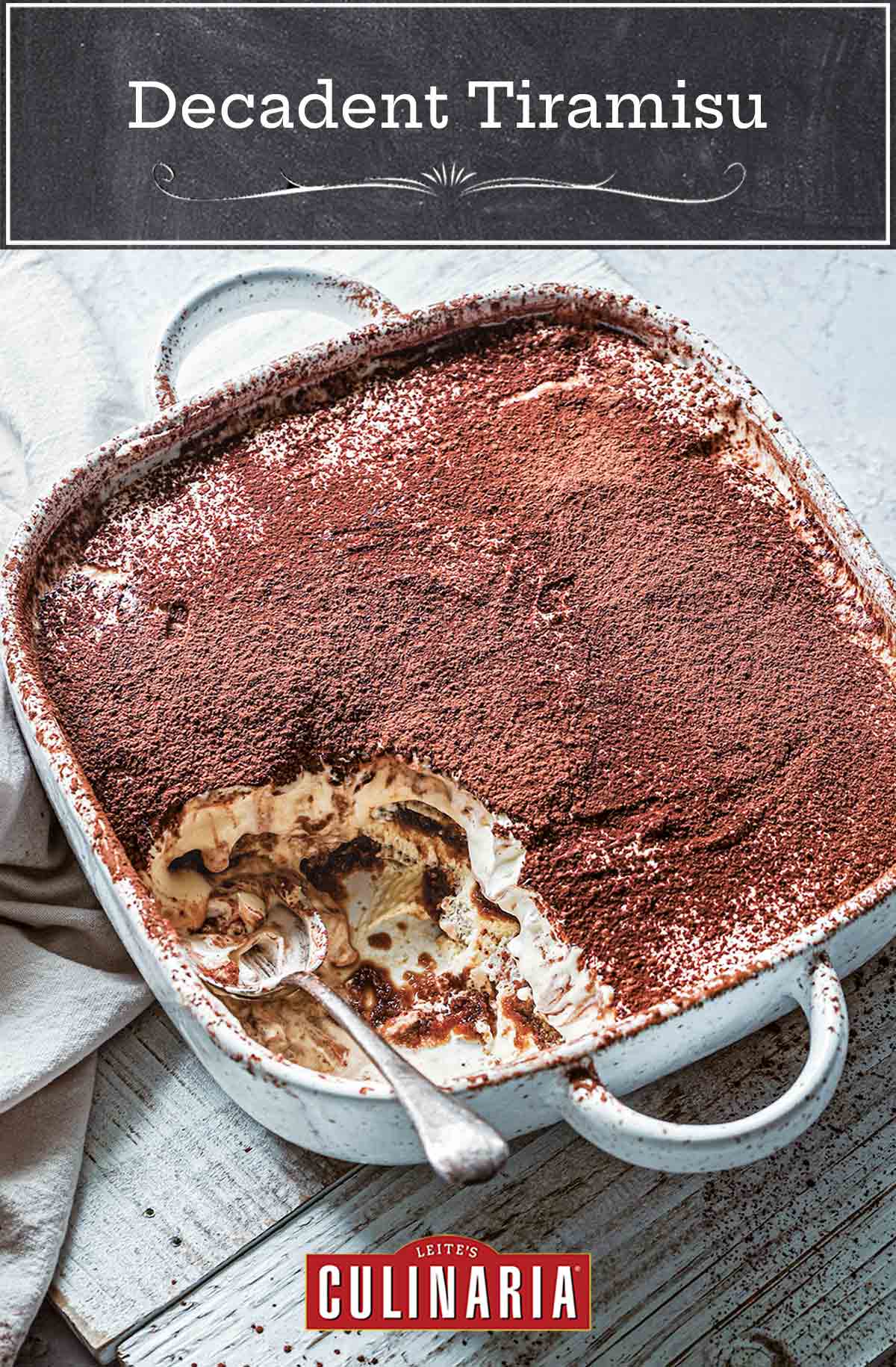











As a newbie, I am always exploring online for articles that can aid me. Thank you.
You’re more than welcome, Willodean.
Dear David, thank you for a such wonderful article! Tiramisu is an integral part of the culinary culture, not only of Italians but also in other nations. The prevalence of this dessert is beyond doubt, but the exact origin of the dish is controversial. The date of the dessert’s appearance is also ambiguous. Here are more facts about tiramisu here. I’m sure it will be interesting for you!
Nancy, thank you for the kind words. And thank you for the edifying link. I find there’s always controversy around so many foods and their origins!
One little note: tiramisu has not been made for centuries but it is rather a modern dessert. In fact its inventor died a few months ago.
Thanks, Luis. That’s interesting. We’ve seen a lot of conflicting information on the origin and history of the dessert. At least we can all agree that it’s delicious!
Lusi, take a look at this article. It states that it was invented in the 1800s.